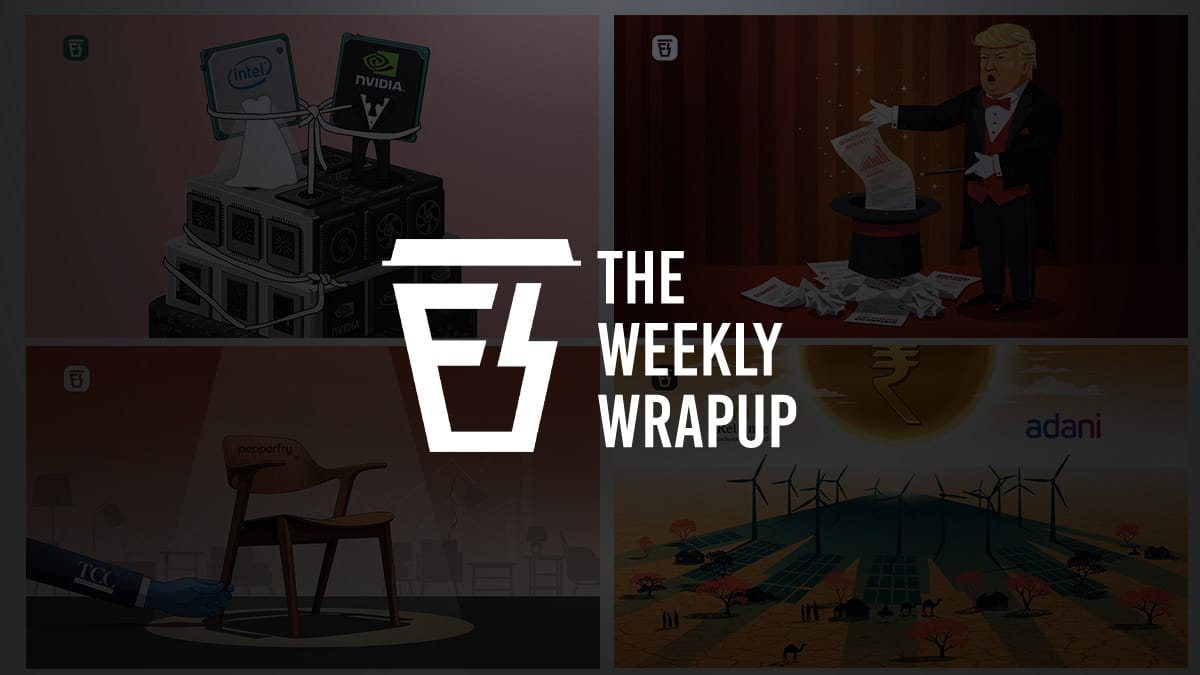TCC’s bet on Pepperfry, Trump dislikes quarterly results, Nvidia’s Intel gamble & more…

In this week’s wrapup, we break down the Anand Rathi Share and Stock Brokers IPO, why Donald Trump just slapped a $100,000 toll on H-1B visas, Nvidia’s surprising $5 billion bet on Intel, Trump’s attack on quarterly results, and whether the desert of Kutch could decide the future of India’s green energy.
And in this week’s Markets edition, we dive into realty firm TCC Concept’s potential acquisition of Pepperfry and explore why a loss-making omnichannel furniture retailer seems to be a bet worth making. Click here to read the full story.
With that out of the way, let’s recap what we wrote this week.
The Anand Rathi Share and Stock Brokers IPO explained
Brokerage firms often live and die by market moods. And Anand Rathi Share and Stock Brokers (ARSSBL), which hit the public markets this week, with a ₹745 crore IPO, wants investors to bet on its full-service model from research, advisory, portfolio management, and more.
Sure, the timing seems right. Household savings are steadily shifting from deposits to markets, margin trading is growing at breakneck pace, and ARSSBL has clocked a 35% compounded annual growth rate in revenues over the past two years.
But dig deeper and you see that discount brokers control nearly 80% of the industry, ARSSBL’s profitability trails peers, and the shadow of the NSEL scam still looms.
And to know more about these things, you can check out our Monday’s story.
The $100,000 H-1B visa shock
Donald Trump slapped a $100,000 fee on new H-1B visas, up from about $1,000. Considering 70% of these visas go to Indians, the shockwaves were instant. The White House insists this is a one-time fee, but the fine print tells a bigger story — agencies have been told to rejig how visas are prioritised and how wages are benchmarked. Which means higher-paid jobs get preference, while entry-level roles could face the heat.
And for Indian IT firms, the calculus changes: why pay $100,000 per engineer in the US when you can expand delivery centres out of the US?
But for India, that could even be a blessing in disguise like more talent staying back, deeper domestic markets, and global capability centres booming.
The question then is does this policy protect American jobs, or push them offshore faster? That’s what we unpack in our Tuesday’s newsletter.
The Intel–Nvidia saga
For years, Intel was the king of chips. But then came the delays, yield disasters, and a slow erosion of its crown. AMD surged ahead in CPUs, TSMC became the world’s foundry of choice, and Intel turned into a laggard.
So why on earth is Nvidia, the hottest AI-chipmaker today, spending $5 billion to take a stake in this wounded rival?
The answer is insurance.
You see, Nvidia’s entire empire runs on chips made in Taiwan by TSMC, and that’s a geopolitical gamble. By working with Intel, Nvidia gets to diversify supply chains, score political points in the US, and access Intel’s still formidable ecosystem. Intel, meanwhile, gets relevance and the whiff of a turnaround story.
But is this partnership a true Plan B, or just another weak link in an already fragile supply chain? You can read our Wednesday’s story here for all the answers.
President Trump dislikes quarterly results now?
Quarterly earnings are Wall Street’s heartbeat. Every three months, companies release their numbers, analysts read them closely, and share prices swing. But Trump isn’t a fan of this. He says the ritual eats up time and money, and worse, it forces managers to chase short-term results instead of long-term growth.
His solution? Scrap quarterly reports altogether and go back to semi-annual updates.
Now that sounds simple, but the evidence suggests otherwise. The UK tried it and found that companies didn’t suddenly invest more for the long term. Instead, many kept reporting quarterly anyway just to stay visible. And fewer disclosures could mean more room for insiders to trade on private knowledge, eroding trust in markets.
So we study this issue more, and try to make sense of it all in our Thursday newsletter.
10% of Kutch for green energy and data centres = development?
Kutch is India’s salt desert, but now it’s turning into the country’s green energy capital.
Reliance is pouring ₹75,000 crores into hydrogen and batteries. Adani is building a 30-GW sprawl of solar and wind farms. And between them, they’ve cornered nearly a million acres… or about 10% of the district’s land.
On paper, it looks like a clean-energy jackpot. But the story isn’t as shiny. Because Reliance’s hydrogen dream needs pipelines that don’t exist and Adani still carries coal baggage that could spook investors. And the desert’s fragile ecology is at risk — endangered bustards colliding with power lines and thousands of litres of water being guzzled for solar panels. And much of this power could go to the west's data centres. So on paper, Google and Meta look greener, but on the ground, Kutch pays the price.
So what’s the way out? That’s something we talk about in our Friday’s story to answer if this is real development, or just a mirage?
Liked this wrapup?
